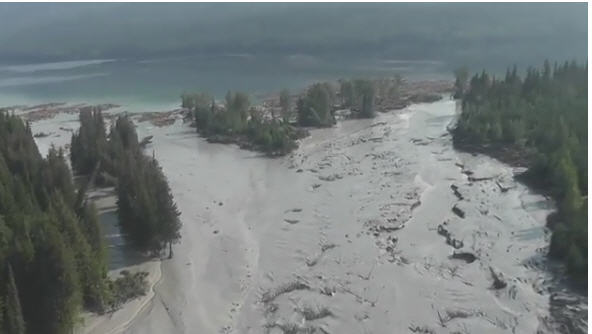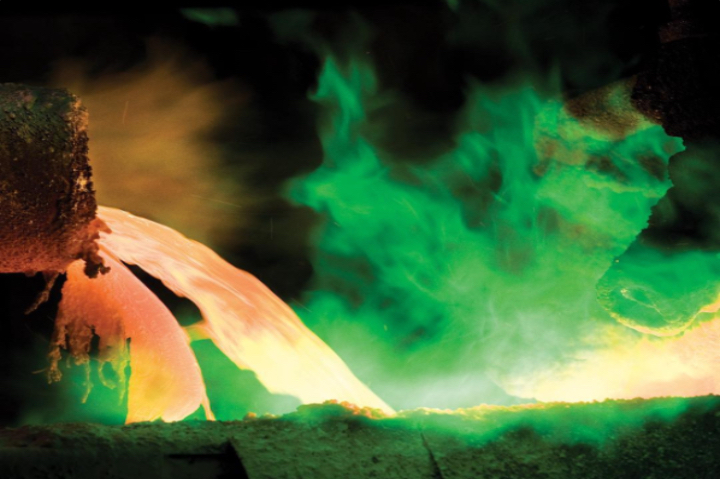Bennett unveils 2 plans sparked by Mount Polley

Image from Cariboo Regional District’s YouTube Channel.
The B.C. government is organizing two separate “actions” sparked by the massive Mount Polley tailings pond spill in early August, Bill Bennett, the province’s minister of energy and mines, said Monday.
The first is a probe into the circumstances of the disaster, to be conducted by an independent panel of three geotechnical specialists with expertise in dams, Bennett told reporters.
Panel members include Dirk Van Zyl, a professor at U.B.C.’s Norman B. Keevil Institute of Mining Engineering, Norbert Morgenstern, an engineering consultant, and Steven Vick, an engineer who helped investigate the New Orleans levy failure in connection with Hurricane Katrina in 2005.
The second planned action involves independent third-party dam safety inspections, based on the potential impact to the surrounding area should a dam fail, for every tailings pond at all permitted mines in the province, the minister said.
“It is a very serious incident, it is a disaster,” Bennett said, referring to Mount Polley. “People in B.C. need to know we can mine in this province safely.”
The catastrophic failure August 4 of the tailings pond wall at Imperial Metals’s (TSX:III) Mount Polley copper and gold mine near the community of Likely released 10 billion litres of water and 4.5 million cubic metres of metals-laden fine sand, contaminating several lakes, rivers and creeks in the Cariboo region.
Van Zyl described the accident as a dark day for not only B.C. but also the world and said other countries, such as Chile, are interested in and watching related developments.
“I can assure you the investigation will be thorough and rigorous,” he said, noting the probe will focus on technical matters and changes to mining that should be considered in the province.
Bennett, asked if he would resign should the investigations show negligence on the part of his ministry, said: “Everything is on the table.”
{{ commodity.name }}
{{ post.title }}
{{ post.date }}




3 Comments
Itabirite
I would be concerned about Vick on the panel; he sensationalized the potential for static liquefaction failures when that was a hot topic. I hope this is a real investigation, not simply a witch hunt full of posturing and chest thumping
rayban
Probability of continuous repollution every time a heavy rain happens . Why not clear the creeks and use the logs along the sides . Then seed with indigenous vegeatation . Not perfect but what else can be done ? Otherwise the trees laying every where willl just rot in piles somewhere ? I cannot foresee a chance of putting all that silt , muck and rock back in the tailings dam . Of course rebuild the dam ASAP to prevent continuous resilting Every Time it Rains .
Piotr_S (Poland)
Review by three geotechnical specialits may give some results or not. For some areas additional experts should be added: (1) hydrogeological conditions below the dam could changed in the period 1990-s 2014. (2) The tailing pond was not operated in 2001 – 2005 period due to the low copper prices. At that time some unknown changes (including recrystallization of some salts) could occur (3) drainage system could be damaged later – as a result of various upgrades to the dam and/or adding 1 mln tons of rock in 2011 – 2014 period (4) the chemical content of the sludge can be different now (2014) to the chemical content in the design documents. Did the operator changed the chemicals at the mill and flotation units ? nobody knows (5) animals ? (6) not disclosed gypsum layer at the depth 25 – 30 meters below the dam ? (7) bad quality of material used for contruction of this small piec of the dam in the past ? Any real review shoulbe based on numerous additional lab data, additional review of the drainage systems around the other areas of this dam etc. Any comment ?